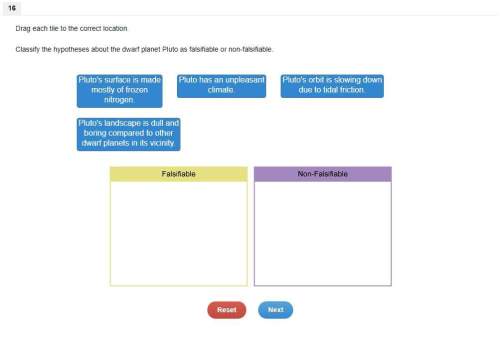
Physics, 12.06.2020 21:57 jadahilbun01
Suppose a car is traveling at 15.1 m/s, and the driver sees a traffic light turn red. After 0.228 s has elapsed (the reaction time), the driver applies the brakes, and the car decelerates at 4.00 m/s2. What is the stopping distance of the car, as measured from the point where the driver first notices the red light

Answers: 3


Another question on Physics

Physics, 22.06.2019 13:40
Consider a double atwood machine constructed as follows: a mass 4m is suspended from a string that passes over a massless pulley on frictionless bearings. the other end of this string supports a second similar pulley, over which passes a second string supporting a mass of 3m at one end and m at the other. using two suitable generalized coordinates, set up the lagrangian and use the lagrange equations to find the acceleration of the mass 4m when the system is released. explain why the top pulley rotates even though it carries equal weights on each side.
Answers: 2

Physics, 22.06.2019 14:40
An athlete is holding 24 lb of weights at a height of 6 inches above the stack as shown. to lower the weights, she applies a constant force of 5 lb to the handle. determine the velocity of the weights immediately before they hit the stack.
Answers: 1

Physics, 22.06.2019 14:50
Nitrogen (n2) undergoes an internally reversible process from 6 bar, 247°c during which pν1.2 = constant. the initial volume is 0.1 m3 and the work for the process is 121.14 kj. assuming ideal gas behavior, and neglecting kinetic and potential energy effects, determine heat transfer, in kj, and the entropy change, in kj/s. show the process on a t-s diagram.
Answers: 2

Physics, 22.06.2019 20:50
An ideal otto cycle has a compression ratio of 8. at the beginning of the compression process, air is at 95 kpa and 27°c, and 750 kj/kg of heat is transferred to air during the constant-volume heat-addition process. assuming constant specific heats at room temperature, determine (a) the pressure and temperature at the end of the heat-addition process, (b) the net work output, (c) the thermal efficiency, and (d) the mean effective pressure for the cycle. (4390 kpa, 1730 k; 423 kj/kg; 56.4%; 534 kpa)
Answers: 1
You know the right answer?
Suppose a car is traveling at 15.1 m/s, and the driver sees a traffic light turn red. After 0.228 s...
Questions

Mathematics, 23.11.2020 03:10


Arts, 23.11.2020 03:10

Mathematics, 23.11.2020 03:10


Geography, 23.11.2020 03:10



Physics, 23.11.2020 03:10

Mathematics, 23.11.2020 03:10

History, 23.11.2020 03:10

Mathematics, 23.11.2020 03:10


Mathematics, 23.11.2020 03:10


Mathematics, 23.11.2020 03:10


English, 23.11.2020 03:10

Mathematics, 23.11.2020 03:10

Mathematics, 23.11.2020 03:10




